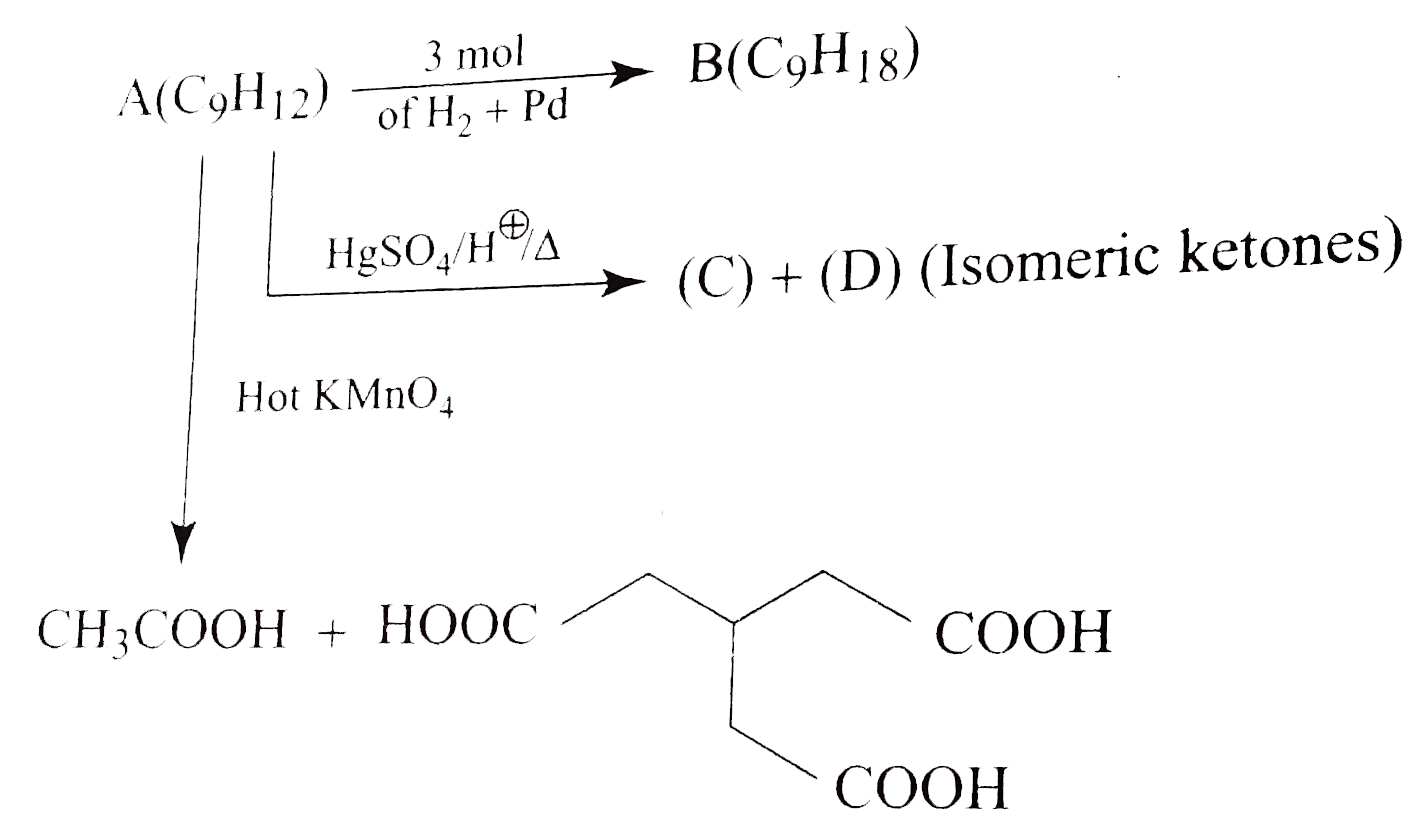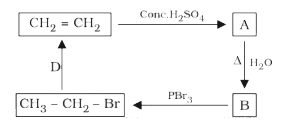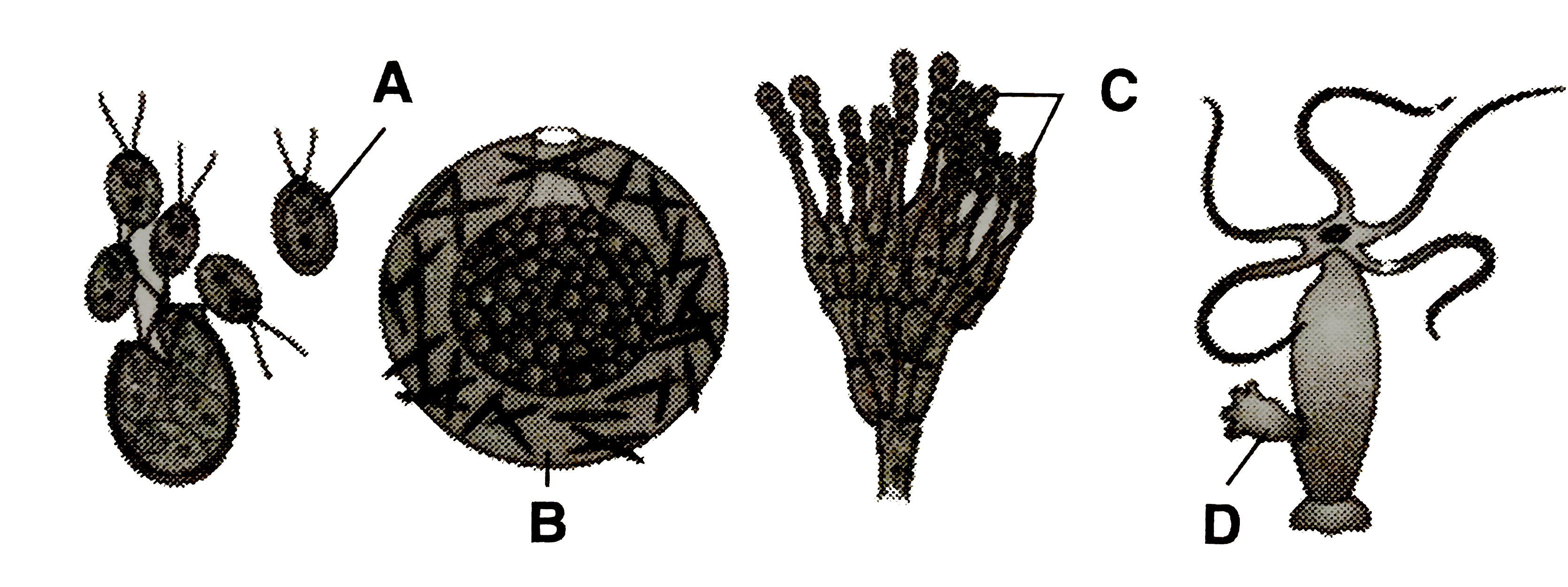Identify A to D.

Video Solution
Text Solution
DU in (A)=(2×9+2)−122=4∘
DU in (B)=(2×9+2)−182=1∘
1 DU in (B) suggests there is a ring in both (B) and (A).
Formation of two isomeric ketones (C and D) from A shows internal alkyne of the type R′−C≡C−R′, which requires at least four C atoms outside the ring. Total C atoms in (A)=9.
C atoms required for internal alkyne outside the ring =4.
Therefore, ring must be five membered (9−4=5).
4 DU in (A) can be accounted for: 1 DU (ring) + 2 DU (C≡C)+1DU for one (C≡C) which must be inside the ring.
Therefore, possible structures of A are:


From the oxidative cleavage of (I), (II), and (III), it is clear that the products of oxidation from (I) are same as given in the problem. So the structure of (A) is (I).
Reactions:

|
Topper's Solved these Questions
- ALKYNESBOOK - CENGAGE CHEMISTRYCHAPTER - ALKYNESEXERCISE - Exercises (Subjective Type)
31 Videos
- ALKYNESBOOK - CENGAGE CHEMISTRYCHAPTER - ALKYNESEXERCISE - Exercises (Linked Comprehension Type)
51 Videos
- ALKYNESBOOK - CENGAGE CHEMISTRYCHAPTER - ALKYNESEXERCISE - Exercises (Archives - Analytical and Desriptive Type)
4 Videos
- ALKENES AND ALKADIENESBOOK - CENGAGE CHEMISTRYCHAPTER - ALKENES AND ALKADIENESEXERCISE - Single correct Answer
14 Videos
- APPENDIX - INORGANIC VOLUME 1BOOK - CENGAGE CHEMISTRYCHAPTER - APPENDIX - INORGANIC VOLUME 1EXERCISE - chapter-7 Single correct answer
1 Videos
Similar Questions
Knowledge Check

Identify DAAgCIBAgFCAgBrDNone of these
Identify DAPbSBPbI2CPbCrO4DZn(OH)2
Identify DAZnOBFeOCFe2O3DCuO






